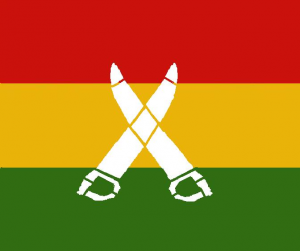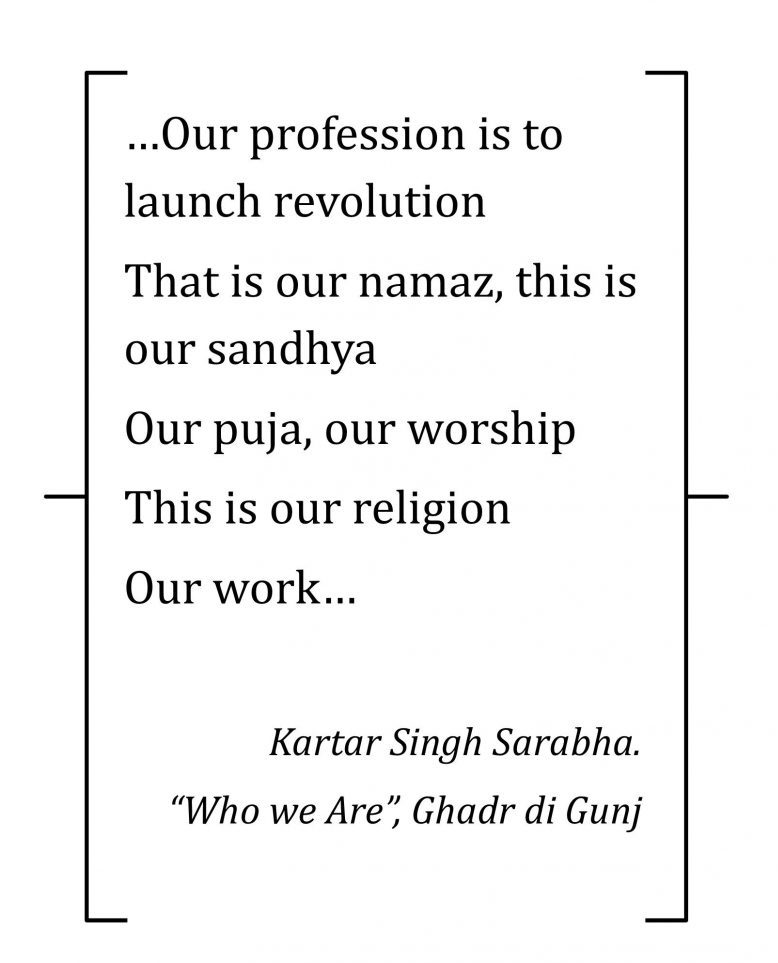
In 1913, on the eve of the First World War, the Ghadar movement was organized on the west coast of the United States and quickly spread to Canada.
Ghadar, a movement dedicated to overthrowing British rule in India and fighting the racist and discriminatory immigration policies of Canada and the United States united Sikhs, Muslims and Hindus inspired by their respective religions and the ideas of Western liberals and socialists.” [1]
The movement was broadly supported by South Asians in BC. There were natural links between Ghadar, anti-colonial sentiment, Gurdwaras and later the labour movement in BC. Ghadar was a nationalist, anti-imperialist and anti-racist movement that was global in its scope. It was very strong amongst the diaspora and long after the official Ghadar “party” failed to achieve mutiny in India, Ghadarites continued to exert an influence in global radical politics and their legacy outlived them.[2]

The poem describes the intent of the Ghadar movement. It refers to revolution as a “profession”, as part of the work of Ghadarites (members or supporters of the Ghadar party) The Khalsa Diwan Society in Vancouver played a “major role in carrying out its [Ghadar movement] propaganda and missions, financially and physically”. [3]
- Peter Campbell, "East Meets Left: South Asian Militants and the Socialist Party of Canada in British Columbia, 1904-1914", Journal of Canadian Studies 20, Fall 1999, 36. ↵
- See (amongst many others): Maia Ramnath, Haj to Utopia: How the Ghadar Movement Charted Global Radicalism and Attempted to Overthrow the British Empire, University of California Press: 2011, 4-8 ↵
- Sohan Singh Deo, "Message from the President", Ghadar Party: 100 Years of Freedom Fighter Movement, (Khalsa Diwan Society of Vancouver, 2013), 8. ↵
